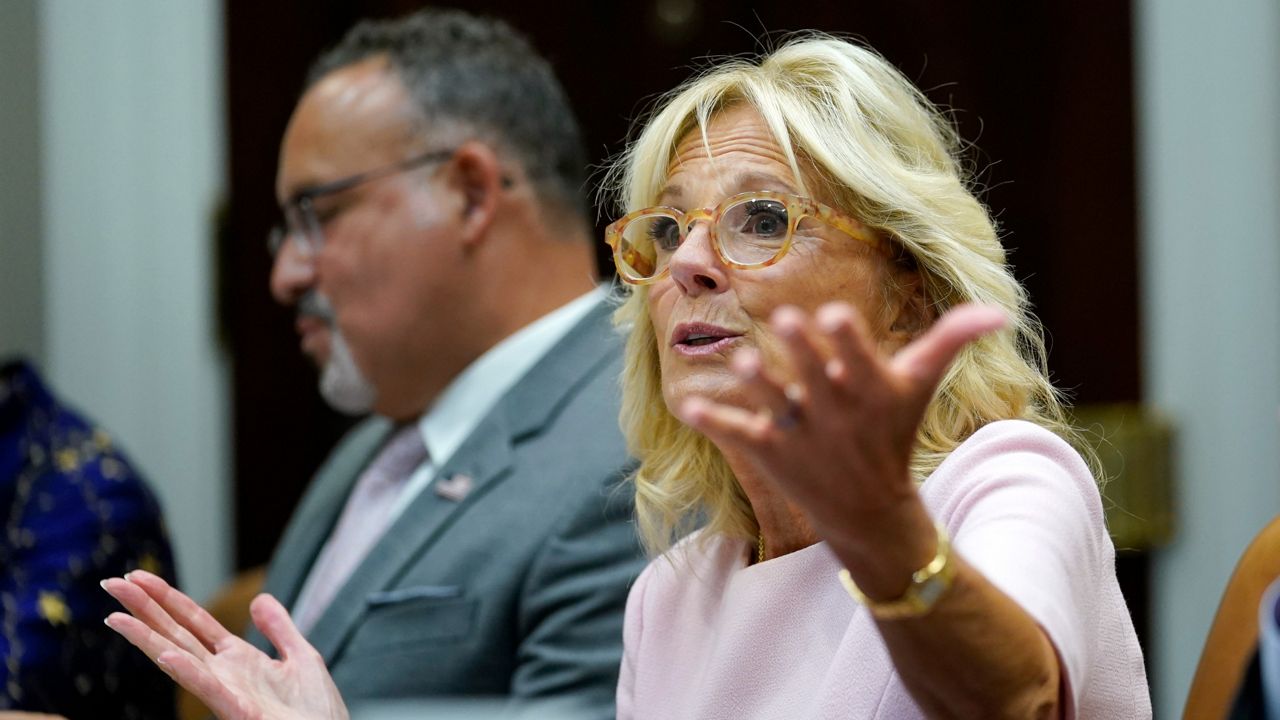The White House on Wednesday announced a private-public partnership with online hiring companies Indeed, ZipRecruiter and Handshake to help schools fill crucial vacancies amid a nationwide teacher shortage.
The announcement preceded a meeting Wednesday at the White House — hosted by first lady Jill Biden, a longtime teacher and education advocate — to discuss staffing challenges in schools nationwide and how the government and private sector can help.
“As children across the country start the 2022-2023 school year, too many schools are struggling to fill vacancies for teachers, including with qualified teachers, and other critical school professionals – such as bus drivers, paraprofessionals, nurses, and mental health professionals – positions that are essential to help our students recover academically, access the mental health supports they need, and thrive in and out of the classroom,” the White House said in a release.
ZipRecruiter launched an online portal Wednesday — SchoolJobsNearMe.com — specifically tailored to K-12 education jobs, which schools, districts and states can use to list open roles for free. Indeed announced virtual hiring fairs for educators nationwide and will allow participating groups to use their free suite of hiring tools to manage the process from beginning to end. Handshake will host a nationwide virtual event in October to help college students learn about careers in education, from teaching roles to school mental health specialists.
“The shortage of talent in education is a national crisis that could hinder the next generation of Americans, our students,” Ian Siegel, CEO of ZipRecruiter, told USA Today, which first reported on the announcement. "Our nation’s children depend on us and we must all rise to the occasion.”
During the White House meeting, the first lady and other officials agreed teacher pay is at the root of the problem.
"We have to pay our teachers and staff competitively,” Jill Biden said.
The first lady told a story about a man she met on the campaign trail in New Hampshire a few years ago. The man and his wife were both teachers, but he confessed to Jill Biden that he had doubts about his future and didn’t think he and his wife could afford to start a family on their salaries.
“There are so many other future educators out there who want to teach, but decide against it — or leave — because so many obstacles stand in their way,” said the first lady, making her first public appearance since recovering from a rebound case of COVID-19.
“If we want to draw more bright, talented people into this field — if we want educators to be able to do what they do best — we have to give them the pay and support they deserve,” she continued.
President Joe Biden briefly popped his head into the meeting in the Roosevelt Room. He pointed to his wife and said, “Whatever she says I agree with,” drawing laughs from the participants.
Education Secretary Miguel Cardona said the teacher shortage is hurting students from low-income backgrounds and children of color most.
“It's a symptom of something that we've had going on before the pandemic — a crisis of respect,” Cardona said, citing a recent report from the Economic Policy Institute that found teachers’ weekly pay increased just $29 on average from 1996 to 2001 after being adjusted for inflation.”
In the public sector, Cardona and Labor Secretary Marty Walsh, who also attended Wednesday’s meeting, sent a letter to state and local education leaders urging them to take part in programs that can help increase teacher pay, including using funds from the $1.9 trillion COVID-19 relief bill passed by Congress and signed by President Biden last year, the American Rescue Plan. The Labor Department is also committing more than $100 million to apprenticeship grants to expand programs that can grow the education workforce.
“Two of the most important actions states and districts can take to address these challenges are to provide affordable high-quality pathways into the profession and to ensure that the teaching profession offers a livable and competitive wage,” Walsh and Cardona wrote, adding: “We are calling on states to take significant action and use federal, state, and local resources available to ensure that prospective teachers will not face economic challenges as they pursue and enter the teaching profession, so all students have access to a high-quality education and the educator workforce they need to succeed.”
Wednesday’s summit also included Susan Rice, director of the U.S. Domestic Policy Council, executives from ZipRecruiter, Handshake and Indeed, and leaders from education groups such as the American Federation of Teachers, National Education Association and the Council of Chief State School Officers. New Jersey Gov. Phil Murphy, who chairs the National Governors Association, also attended.
“This is just the start,” Jill Biden said. “This is a powerful coalition, and we are all ready to get to work to make sure that our students have the teachers they need and deserve.”
According to a recent survey from the Department of Education, the average American public school reported having 3.4 openings for teachers as of June 2022, with public schools expecting to fill an average of three teaching vacancies for the 2022-23 school year. Sixty-two percent of public schools reported in June that they were concerned about filling staff vacancies.
Eighty-eight percent of public schools reported teacher and staff burnout was a concern during the 2021-22 school year, according to the survey.



